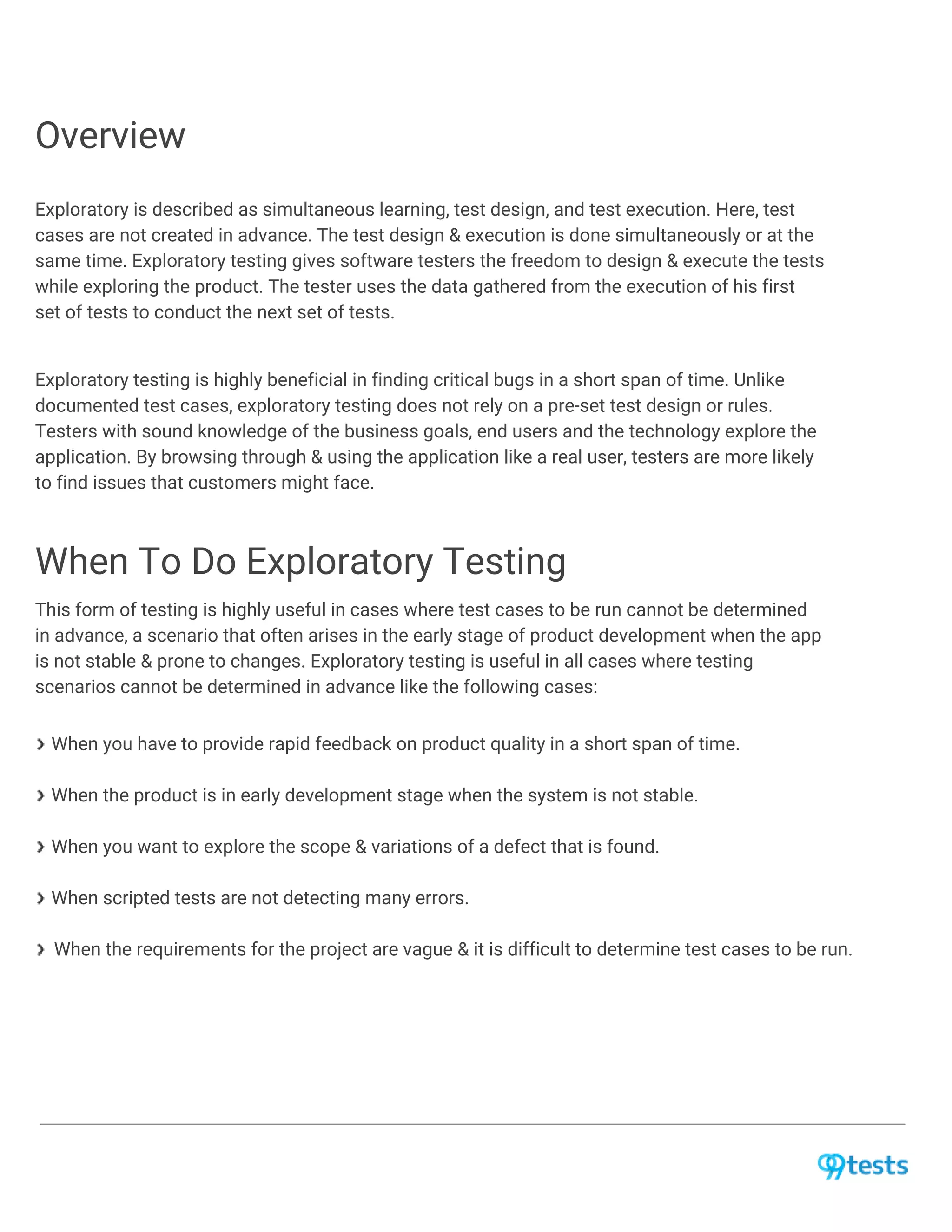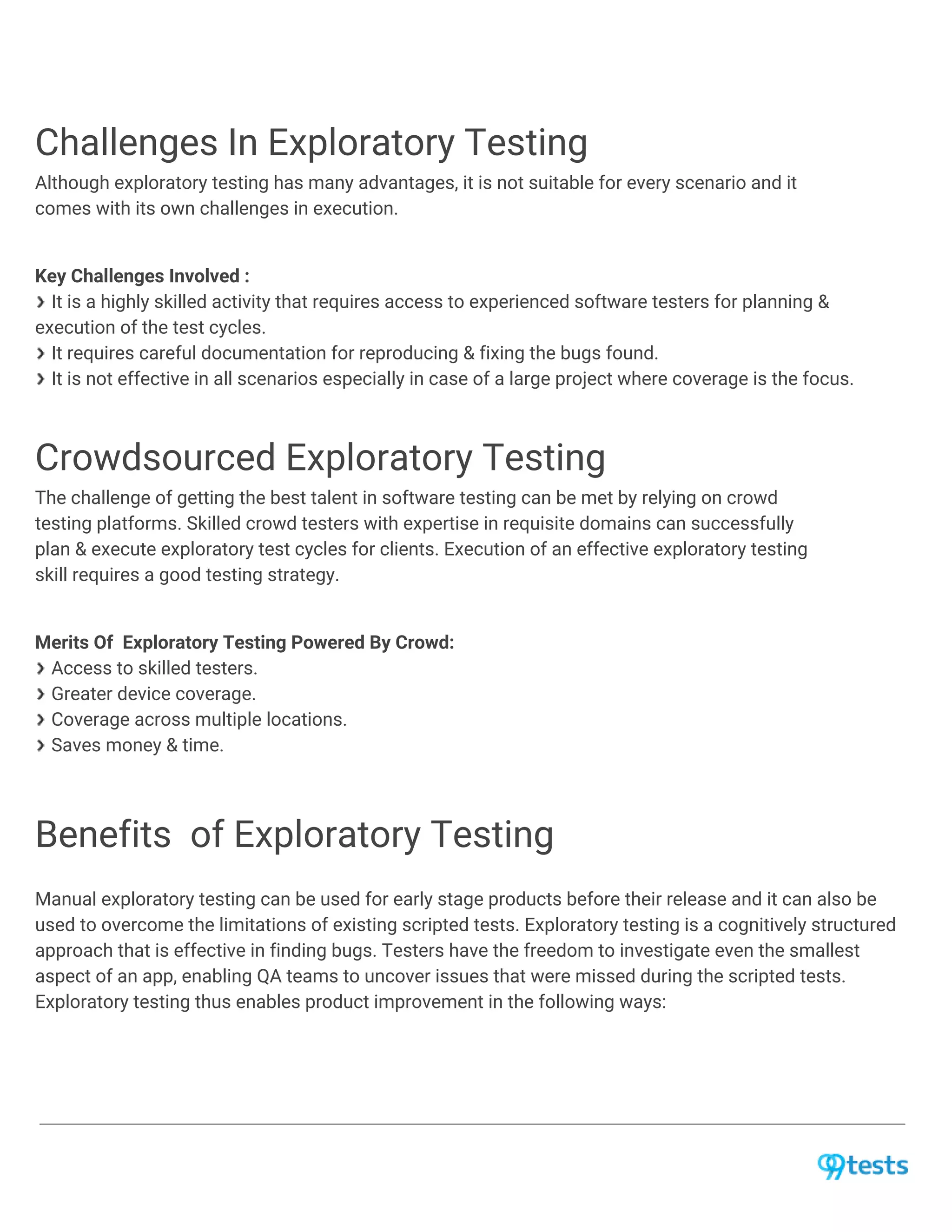Exploratory testing involves simultaneous test design, execution, and learning without pre-set test cases. Testers are free to explore the product like real users to find bugs missed in scripted testing. It is useful early in development when requirements are vague and the system is unstable. Challenges include needing experienced testers and careful documentation. Crowd testing can help overcome challenges by providing skilled testers across devices and locations. Exploratory testing finds critical bugs quickly and improves scripted tests and product understanding by encouraging creativity and new perspectives.






